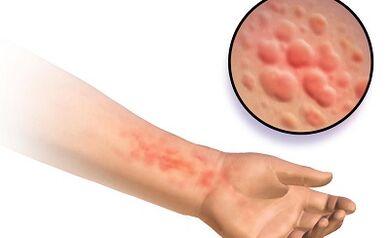Helminthiasis is a disease in which parasites develop in the human body.With a person's lifestyle, helminths develops in the genitourinary system.Against the background of parasite development, various diseases may appear.
General information
Pathological incidents in the urinose cavity are diagnosed on the background of the effects of echinococci, philosophy, schistos.In most cases, infections with parasites are carried out by fecal-oral pathways.
Helminants also fall into the body through water or food.In most cases, the disease appears in people who take vegetables and uninvited fruits.
Parasitic type in human genitouriner system
Most parasites are damaged by the digestive system.However, there are several types of helminthic aggression that penetrates the human genitouriner system and begins parasites in it.
Enterobiosis

Enterobiosis belongs to the category of parasitic disease that develops in the gastrointestinal tract.With the treatment of this disease, parasites penetrate other organs, including the genitourinary system.
Pathological events are diagnosed with the effects of pins.The worm length reaches 5 millimeters.
Parasites violate the integrity of the urinary cavity.With prolonged disease, the patient is diagnosed with bleeding.Tips lead to the development of severe kidney disease.
With long diseases, cancer is observed in the genitourinary system.In most cases, pathological complications are urinary incontinence.
Filyariosis
Filyariosis is a helminth that can reach 45 centimeters long.The larvae carrier is a mosquito that sends it during a bite.
Subsequently, active reproduction and parasites of helminths in the genitourinary system were observed.The disease is characterized by the presence of several stages of development.
If the larva enter the human body, the lymph nodes swell.Also, the pathological process is accompanied by rash on the skin.
If you do not perform timely treatment of the disease, this will lead to increased lymph nodes to their critical size and rest.
The most common pathological complications are Hiluria, which is accompanied by a combination of urine and lymph.Subsequently, the accumulation of lymph in the abdominal cavity was observed.In the last stage, the appearance of ivory disease is diagnosed.
The removal of worms is done through the genitourinary system.With this disease, the patient is diagnosed with pain.In urine, blood impurities appear.
Shistosomosis

Diseases occur when worm worms are exposed to, which is parasites in the blood circulatory system.In length, parasites can reach 20 centimeters.Every day is fertilization of up to three thousand eggs.The absorption of larvae is performed through the wall of the urbanous cavity.
The penetration of parasites is carried out through poor water.The feature of helminths is that they penetrate the body even through microranks.
At the site of the lesion, the development of the inflammatory process is observed, which is accompanied by redness and itching -the skin.
When moving parasites through the genitourinary system in patients, the emergence of general weakness is diagnosed.The patient also complains of pain in the stomach.
In the next stage, the loss of the symptoms of the disease is observed.If 6 months have passed after the infection, a small amount of blood is diagnosed in the urine, which gradually increases.
With schista parasites in patients, the development of cystitis, tumors in the genitourinary system, kidney inflammation and stone appearance can be observed.In women, damage to the genitals can be diagnosed with parasites.
Echinococcosis
The disease develops by drinking vegetables and non -washed fruits.It also appears when eating raw meat and fish.The spread of parasites through the human body is done through the blood.
During the pathological period, a person has unpleasant symptoms.With pathology, people complain about the emergence of weaknesses and weaknesses even when doing normal affairs.
Worms cause kidney disease.The patient also complains about the appearance of itching.
Symptoms of disease
If the urinary tract is affected by parasites, this leads to the occurrence of appropriate symptoms.In the early stages of the disease, severe itching was observed.
The patient may have rash and redness of the epithelial lid.Often, genitourinary parasites lead to increased lymph nodes.The bladder infection is not complied with immediately after the helminth enters the human body.
The disease is accompanied in most cases with painful rash and itching on the skin.In the field of damage to parasites, the epidermis may squeeze.
Patients complain about the occurrence of unpleasant sensations during intercourse.In the genitals, when the parasite penetrates, the rash appears.In women, the appearance of vaginal bleeding is diagnosed.
In the patient's urine, blood impurities appear.The pathological process is accompanied by nerve disorders.While emptying the bladder, pain in the patient occurs.
Patients complain about the appearance of headaches or migraines during pathology.It is usually accompanied by various nerves.Patients complain of fatigue and continuous instability of sleep.
With pathology, the patient is reduced in appetite, leading to rapid weight loss.The disease is accompanied by diarrhea, which can be replaced by constipation.Often, after the penetration of the parasite into the body, the patient sees an increase in body temperature.
With parasites in the human genitourinary system, the development of appropriate symptoms is observed, which requires anxiety contacting a doctor.
Treatment
Pathological condition therapy begins with diagnosis.For this purpose, instrumental and laboratory methods are used.Diagnosis is carried out after 1.5 months after an estimated infection.
Pre -immunological tests -are provided, with which antibodies to the worm are determined.
The choice of the method of treating the pathological process directly depends on the type of worms that are provoked.With cystostomosis, the disease is cured only in stationary conditions.
In this case, drug therapy is used.Patients are recommended for treatment with special anthelmintic drugs.
To ensure full treatment of helminthic aggression, patients are recommended to undergo several courses of treatment.
To improve damaged body performance, pathogenic treatment and symptoms are recommended.
If the patient is infected second, then therapy is performed using an antibacterial drug that belongs to the tetracycline line.To enhance the therapeutic effect, the use of antihistamines is recommended.
If the patient has symptoms of phylarariosis, then he or she must be hospitalized.To reduce lymphostasis, swollen limbs are prescribed in high position.At the same time, the use of compression linen is recommended.
In difficult cases, the treatment of the disease is performed by surgery.To eliminate parasitic infections, the use of antiparasitic drugs is recommended.
If the patient has an allergic reaction to the drug, then the use of antihistamines simultaneously is recommended.
Parasites in the genitourinary system develop in very rare cases.But, they are quite dangerous.That is why, in the event of the first symptom of helminthic aggression, the patient must undergo appropriate examination.
Only after determining the type of pathogen, will the patient be prescribed treatment according to the characteristics of the individual and the severity of the pathology.






































